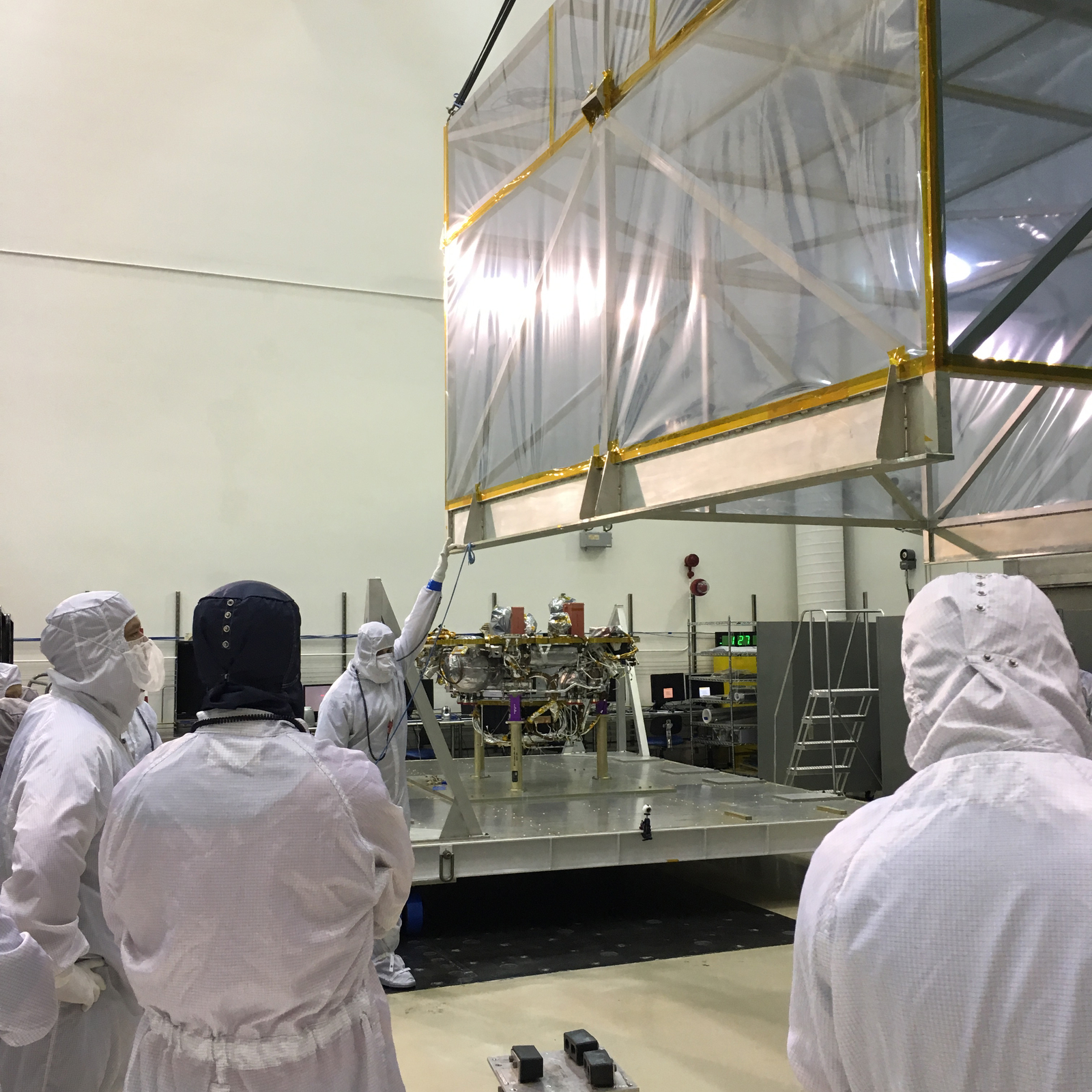Spacecraft Coming out of Protective Storage

| Credit | NASA/JPL-Caltech/Lockheed Martin |
|---|---|
| Language |
|
Members of the InSight mission's assembly, test and launch operations (ATLO) team remove the “birdcage” from NASA's InSight spacecraft, in this photo taken June 19, 2017, in a Lockheed Martin clean room facility in Littleton, Colorado. The birdcage is the inner layer of protective housing that shielded the spacecraft while in storage following a postponement of launch. It is made of a film that dissipates electrostatic conditions to protect the spacecraft from contamination.
The InSight mission (for Interior Exploration using Seismic Investigations, Geodesy and Heat Transport) is scheduled to launch in May 2018 and land on Mars Nov. 26, 2018. It will investigate processes that formed and shaped Mars and will help scientists better understand the evolution of our inner solar system's rocky planets, including Earth.
InSight is part of NASA's Discovery Program of competitively selected solar system exploration missions with highly focused scientific goals. NASA's Marshall Space Flight Center in Huntsville, Alabama, manages the Discovery Program for the agency's Science Mission Directorate in Washington. NASA's Jet Propulsion Laboratory, a division of the Caltech in Pasadena, California, manages InSight for the NASA Science Mission Directorate. Lockheed Martin Space Systems, Denver, built the spacecraft.

